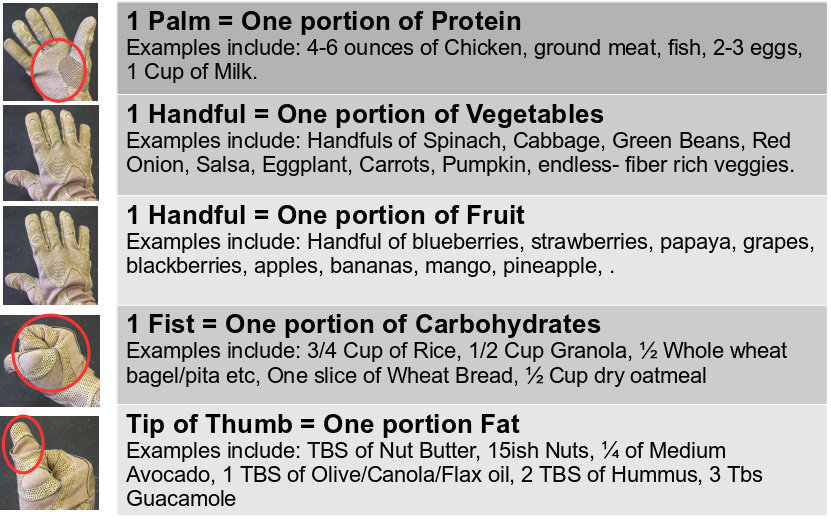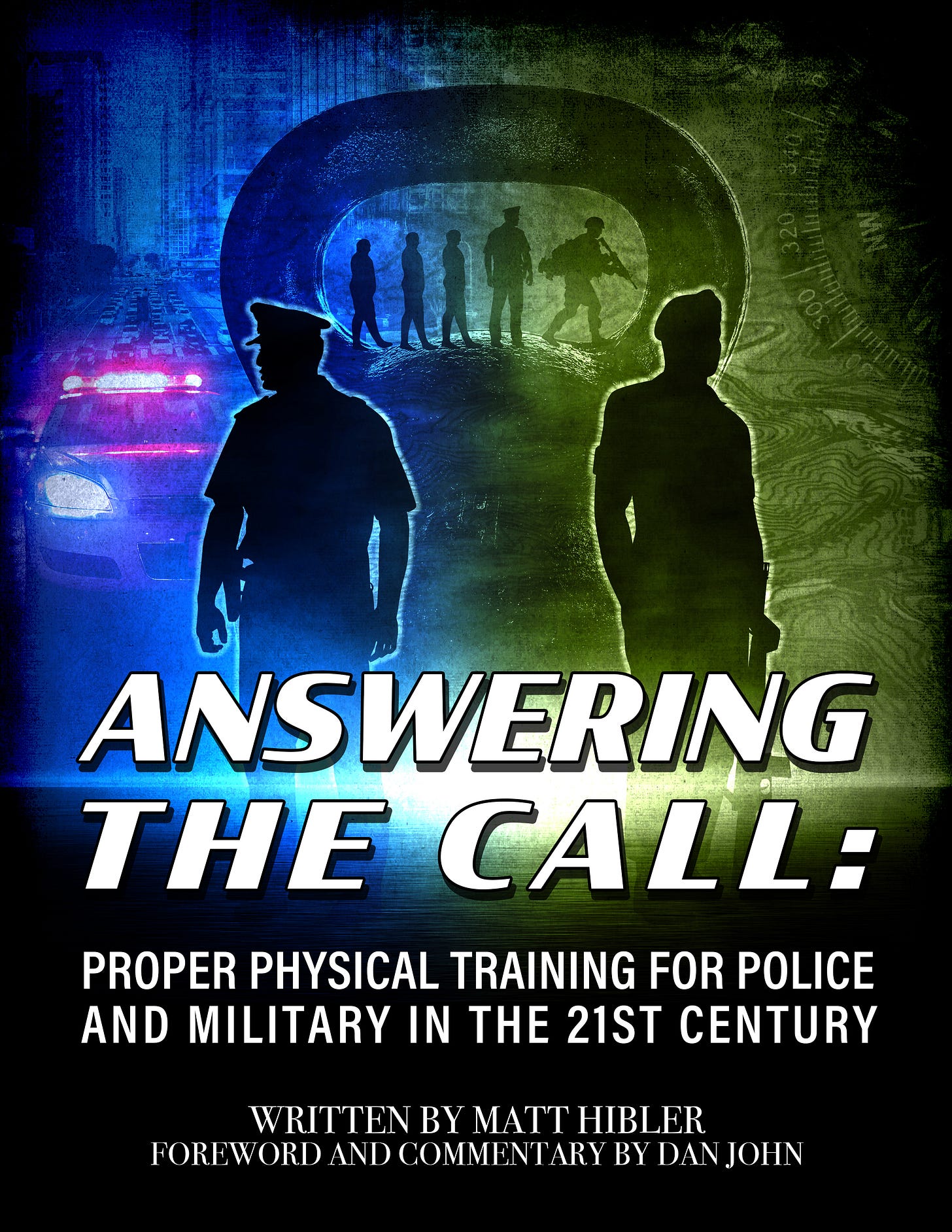Build Your Plate to Fuel Your Life and Performance
A simple guide to building a healthy and balanced meal for even the most busy first responder.

I previously commented on how Law Enforcement might be a bit behind when it comes to strength and conditioning. I am speaking in generalities. I know many of you live an almost paramilitary lifestyle; balancing family and social life while maintaining a constant and relentless pursuit of improvement and excellence. Those future articles (and book) are coming.
For those of you just starting your pursuit of constant improvement, I will continue the “Build” series to help guide law enforcement (or anyone) with the creation of simple and repeatable habits that over time will be pay massive dividends down the road. Think of this as an investment in yourself. In the long term let the compound interest do the work. Every day, just put away a small percentage of your discipline. It’ll grow even if it ebbs and flows a bit, but just keep squirreling it away. Society needs you to rise to this challenge to be physically fit. You need to be ready to face the current societal problems that you are tasked to solve. You will also have to train to face the unknown challenges that will be in the future. You need to be healthy to make it through this grind.
Considering what you fuel your body with will probably have the biggest impact on your body composition results, let’s talk about how to build your plate. Please keep reading, this isn’t a lecture on totally changing your life overnight. Maybe use what you read in this article for just one meal a day. In a week, use for it two. Let your new habits build on one another so they become a part of you.
When I say build your plate, what I mean is how do we build a balanced meal that is tailored to an individual with minimal effort or thinking? This is not something I thought about on my own. Nutrition and strength models have been reused, recycled, renamed and repurposed about every 5-10 years. I would say this is an old, but new idea. I heard about this as an undergrad in college and that was almost a decade and a half ago. Great organizations like EXOS use a model like this for some of their most elite clients, as well as other awesome organizations like Precision Nutrition have their version.
What you are seeing in the chart above is a very simple guide for something called portion control. Almost everyone has heard about this, but many get intimidated and think they need to measure everything out, count all their calories, etc. This is not the case. Also, why is the hand wearing a tactical glove? It is because everything is cooler when it’s tactical. Just ask the officer at your department who has $5000 worth of gear attached to his patrol rifle, but can’t make it up a flight of stairs without passing out.
I digress...
If you are struggling with your weight, aren’t eating enough vegetables, not getting enough healthy fat, fiber, or whatever; try this at every one of your meals throughout the day if you have the will. You’ll be ahead of probably 90% of the population. You will also be more likely to fill any nutritional gaps in your diet. Of course there is room to tinker with this, but for most people who are trying to start new habits then later progress to the fancier stuff, this is an outstanding starting point. Especially for people on the go.
The Application
Let’s take our hypothetical police officer...we will call him Officer OnTrack. OnTrack is married with kids and working nights. He is incredibly busy, struggles to get good sleep, but is trying to get it together. He is doing the 20 minute a day program and is now trying to complement the program with a cleaner diet. It is midnight, he’s hungry, and forgot to pack his meal. He can either go into the restaurant that is literally sponsored by a clown, or go to a grocery store that is open for 24 hours. He elects the grocery store.

Officer Ontrack walks in and nods to the night manager. The manager nods back and is glad to see him once he realizes he isn’t there for a call. OnTrack scans the room to make sure it’s safe, and then meanders over to the produce section and grabs a bag of pre-sliced and washed vegetables, striving to get multiple colors in per meal. More colors the better with vegetables (and fruits). Color tends to correlate with the different vitamins, nutrients, antioxidants, and other various superpowers that comes along with our plant friends.
Officer OnTrack is concerned he might get pulled away for a hot call because it is the weekend, so he quickly grabs a few packets of his favorite flavor of Tuna, a loaf of the most unprocessed wheat pita/bread he finds on the shelf, and a bag of almonds. He leaves spending maybe slightly more than he would have if he purchased a full meal at another location, and has enough to make two+ meals during the rest of his 10-12 hour shift. He can even save the shelf stable food he bought; bringing it back for his next shift the following night. The manager thanks him for his service as OnTrack leaves the store, and he makes his way back to his patrol vehicle. I hope in your mind you were envisioning a 1950s commercial where everyone is smiling and obnoxious elevator music was playing in the background.
Officer OnTrack references the chart above decides he wants two palms of protein because he is a little hungrier than usual. He can have as much fibrous vegetables as he wants (but at least two handfuls), and decides on one wheat pita because he wants to tighten up a bit. He counts out 15-20 almonds then thinks, Well, tuna is pretty lean so I’ll do 25 almonds to make sure I’m satiated with this healthy meal and get some healthy fat in.
Officer OnTrack just built a healthy and filling meal in about 10 seconds by simply using his hand as a general guide. Obviously not the most perfect meal but what is? When you’re home you can build something even better. When you measure out with your hand your portions generally tend to fit what you need because it’s based off the size of your hand. Use this as a starting point, maybe just try doing one serving from each food group from above and see how that works and feels.
Drink enough water to make sure your urine is at least light colored lemonade, and write me in a month after you dropped a few pounds and are feeling better. Anyone can do this with just a hint of discipline.
Before you go through the drive-through for hamburger and fries, look at a picture of your family and ask yourself where do you want to be in 5, 10, or 15 years. Then look at your badge. What kind of cop do you want to be? The one that people look at and know he is the real deal or the one that somebody you pulled over on a 1:00 AM and thinks, “I can outrun this guy.”
Or something worse.






One of my readers made me aware of a few typos that I did not catch before posting the original. I fixed the diagram where vegetables were listed twice, as well as a couple others.
I always appreciate the constructive feedback, as I am my own editor. I hope this information is helpful.